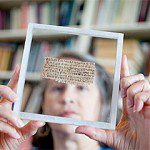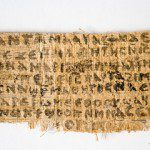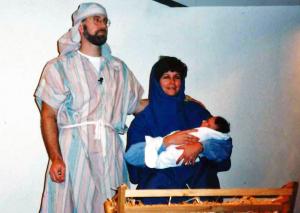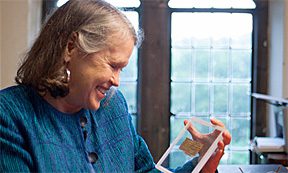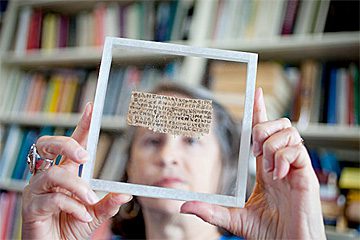Karen King’s recent revelation of a fragment she calls the Gospel of Jesus’s Wife has certainly made headlines. But her presentation in Rome to expert scholars of the Coptic language (the language of the fragment) has also generated a fair amount of skepticism among those scholars.
Here are some excerpts from an AP story by Nicole Winfield:
Scholars on Wednesday questioned the much-publicized discovery by a Harvard scholar that a 4th century fragment of papyrus provided the first evidence that some early Christians believed Jesus was married.
And experts in the illicit antiquities trade also wondered about the motive of the fragment’s anonymous owner, noting that the document’s value has likely increased amid the publicity of the still-unproven find. . . . .
Stephen Emmel, a professor of Coptology at the University of Muenster who was on the international advisory panel that reviewed the 2006 discovery of the Gospel of Judas, said the text accurately quotes Jesus as saying “my wife.” But he questioned whether the document was authentic.
“There’s something about this fragment in its appearance and also in the grammar of the Coptic that strikes me as being not completely convincing somehow,” he said in an interview on the sidelines of the conference.
Another participant at the congress, Alin Suciu, a papyrologist at the University of Hamburg, was more blunt.
“I would say it’s a forgery. The script doesn’t look authentic” when compared to other samples of Coptic papyrus script dated to the 4th century, he said. . . . .
Wolf-Peter Funk, a noted Coptic linguist, said there was no way to evaluate the significance of the fragment because it has no context. It’s a partial text and tiny, measuring 4 centimeters by 8 centimeters (1.5 inches by 3 inches), about the size of a small cellphone.
“There are thousands of scraps of papyrus where you find crazy things,” said Funk, co-director of a project editing the Nag Hammadi Coptic library at Laval University in Quebec. “It can be anything.”
He, too, doubted the authenticity, saying the form of the fragment was “suspicious.”
I would encourage you to read the entire article for more details.
Since I am not an expert in the Coptic language, I have nothing much to add to this conversation. It does seem, however, that we should be slow to assume that the so-called Gospel of Jesus’s Wife is authentic, in spite of the care shown by Karen King to verify its character. I will say, once again, that I respect King’s decision to publicize the fragment and to submit her theory of its meaning to scholarly debate.
I will have more to say about the fragment and its implications soon.

